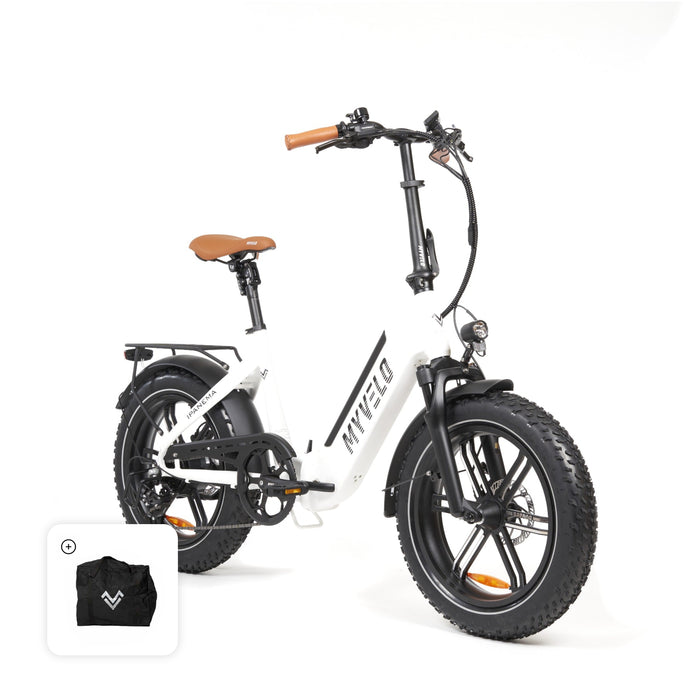
Ipanema electric folding bike
incl. FREE shipping & free returns
Ready for dispatch immediately, delivery time 2-3 days.

Electromobility is booming – and with it, the range of electrically powered two-wheelers is growing. This raises the question for many: e-bike or e-motorcycle – what's the difference? And which of the two vehicles is better suited to their needs? In this blog post, we provide an unbiased comparison of key aspects such as speed, range, driver's license requirements, costs, usage options, and legal framework.
Von Helena Burgardt |
2 minutes read time

E-bike (pedelec):
The classic e-bike—more precisely, the "pedelec"—only provides assistance with an electric motor when pedaling. Assistance ends at 25 km/h. It is considered a bicycle under traffic law and can therefore be ridden without a driver's license.
E-motorcycle:
An e-motorcycle is a fully motorized vehicle powered entirely by electricity—without pedals. Its performance is significantly higher, and speeds over 100 km/h are not uncommon. Depending on the model, a corresponding driver's license (e.g., A1 or A) is required.
E-bike: Max. 25 km/h (assisted). There are also S-Pedelecs with speeds up to 45 km/h, but these are legally considered mopeds.
E-motorcycle: Depending on the model, up to 100 km/h or more – comparable to a classic motorcycle with a combustion engine.
Conclusion: If you want to be active and travel in an environmentally friendly way in city traffic, an e-bike is a good choice. Those who want to travel longer distances on country roads or highways will benefit from the speed of an e-motorcycle.
E-bike: Typical ranges are between 50 and 120 km – depending on battery size, support level and terrain profile.
E-motorcycle: Ranges of 100 to 200 km are common – sometimes even more, but often associated with longer charging times.
Conclusion: For the daily commute, shopping trips, or short tours, an e-bike is perfectly adequate. For frequent riders covering longer distances, an e-motorcycle might be more practical.
E-bike: No driving license required, no helmet required (but recommended).
S-Pedelec (up to 45 km/h): AM driving license required, helmet compulsory, license plate compulsory.
E-motorcycle: Depending on the power level, a motorcycle license is required (e.g., A1, A2, A). Helmets are always mandatory.
Acquisition:
E-bikes: from around 1,500 to 4,000 euros
E-motorcycles: usually between 4,000 and 15,000 euros
Operating costs:
E-bikes are inexpensive to maintain (little maintenance, no fuel, no insurance requirement).
E-motorcycles require car insurance, registration, and maintenance – but no fuel costs.
E-bikes: Ideal for city traffic, commuting, leisure trips, or vacations. You can use bike paths, enjoy flexibility, and be environmentally friendly.
E-motorcycle: Good for commuting over longer distances, with higher speed and more riding comfort – but usually limited to road use.
Both vehicles are locally emission-free. However, the e-bike is even more environmentally friendly due to its lower battery capacity and lighter weight. The production of an e-motorcycle is more resource-intensive, which is reflected in the overall footprint.
| Usage type | Recommendation |
|---|---|
| Short distance / city | E-bike |
| Leisure & exercise | E-bike |
| Commuting across country | E-motorcycle or S-Pedelec |
| Speed & Comfort | E-motorcycle |
| Environmental focus | E-bike |
If you want to be sporty, make fast progress and save money and resources, a high-quality e-bike is an excellent choice.
🔋 MYVELO 's e-bikes combine sophisticated design, powerful batteries and features suitable for everyday use – ideal for modern mobility on two wheels.
Tip: If you are still unsure, you can take a test ride – with either an e-bike or an e-motorcycle – and decide for yourself which riding experience suits you better.